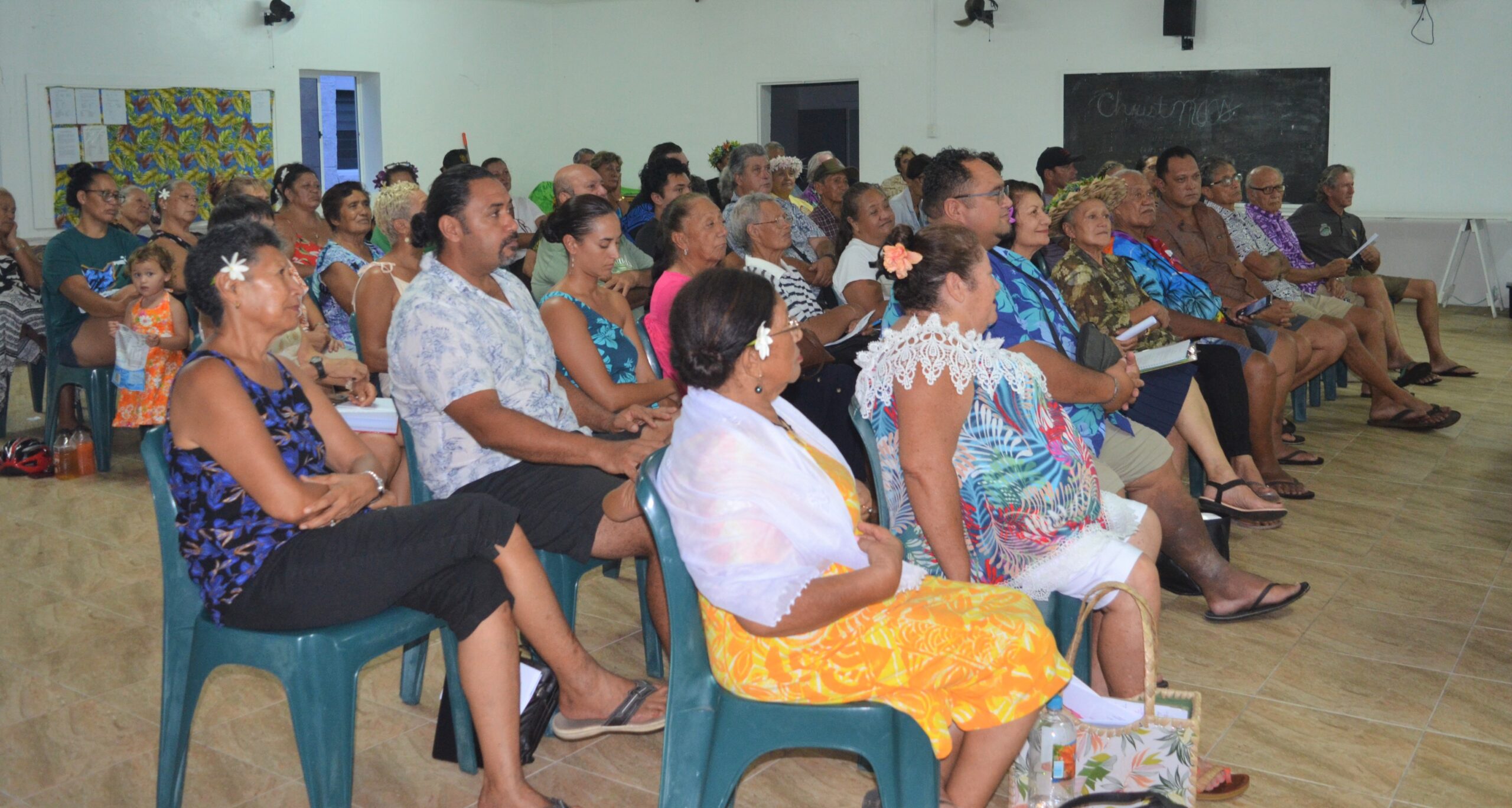Takitumu Conservation Area set to become first OECM in Pacific
Tuesday 19 March 2024 | Written by Melina Etches | Published in Environment, Local, National

The Ngati Kainuku, Ngati Karika and Ngati Manavaroa kopu at the National Environment Services/Takitumu Conservation Area Working Group meeting with landowners last week. MELINA ETCHES/24031308
In a first for the Cook Islands as well as the rest of the Pacific, the Takitumu Conservation Area (TCA) will be submitted to be internationally recognised as an Other Effective area-based Conservation Measure (OECM).
The 155 hectare (383 acres) forested area which includes three upper valleys of Turoa, Totokoitu and Avana, became a sanctuary in February 1996 with the agreement of the three major landowning groups of Ngati Kainuku, Ngati Karika and Ngati Manavaroa, assisted by the National Environment Service (NES).
Last week, NES in partnership with the Takitumu Conservation Area Working Group (TCAWG) hosted a community meeting at the Avana Sunday School Hall that was well attended by around 80 people.
The meeting was to inform the landowning families of the work that has been carried out for the TCA to become an OECM, an internationally recognised site outside the legal protected areas status that deliver effective and long-term conservation of biodiversity.
The meeting was to ask the families for their commitment and support to the TCA by giving their consent for it to become an OECM.
Ana Tiraa, from Ngati Manavaroa and the TCAWG, was ecstatic at the supportive outcome from the three kopu (tribes).
“Words are indescribable … it is with heartfelt gratitude to the three landowning tribes of Ngati Kainuku, Ngati Karika and Ngati Manavaroa - working together to achieve a common goal of conserving the natural resources for future generations, it is fantastic,” said Tiraa.
“I am so proud of everything the TCA has achieved, this has been very much a collective effort and there are many people who have been a part of this journey.”
Tiraa acknowledged Ian Karika, Edward Saul, Hugh Robertson and Linda Nia who have dedicated a lot of their time to the TCA.
“We are also thankful to the National Environment Service in particular Elizabeth Munro and Jessie Nicholson for bringing us together to work on the OECM assessment.”
She said that the declaration of the TCA as an OECM will give the organisation increased recognition nationally and internationally.
“We also see that the OECM status will help towards sustaining conservation efforts.”
The endorsement of the OECM assessment was agreed to and signed by the three kopu represented by Kainuku Kapiriterangi Ariki – Kapiriterangi Tere’s Power of Attorney (POA) her daughter Kapiri Tiaiti, Makea Karika George Ariki – George Taripo and Manavaroa Mataiapo – Philip Nicholas.
Makea Karika George Ariki said he was pleased with the outcome of the meeting in keeping the TCA protected for future generations.
Jessie Nicholson, NES biodiversity coordinator, will submit the OECM application to the South Pacific Regional Environment Programme (SPREP) and to the United Nations Environment Programme UNEP World Conservation Monitoring Centre.
A presentation on this tremendous work will also be delivered to the Kopapa Ao Ora Natura (Cook Islands National Biodiversity Steering Committee).
Nicholson said: “At this meeting we also raised awareness on the importance of the TCA in terms of its biological diversity and the natural resources.”
“As you can imagine, so much has changed over the 30
years of work in the area, we have new landowners, and changes have been made
to the management committee.”
Nicholson said the significant change in the Takitumu Conservation Area is the
increased number of the Kakerori bird which now numbers to well over 600, from
a once low of 29.
“This is due to the conservation efforts carried out in the area.”
The overall objective of the TCA is to conserve its biological diversity for the benefit and enjoyment of present and future generations of the Cook Islands.















































